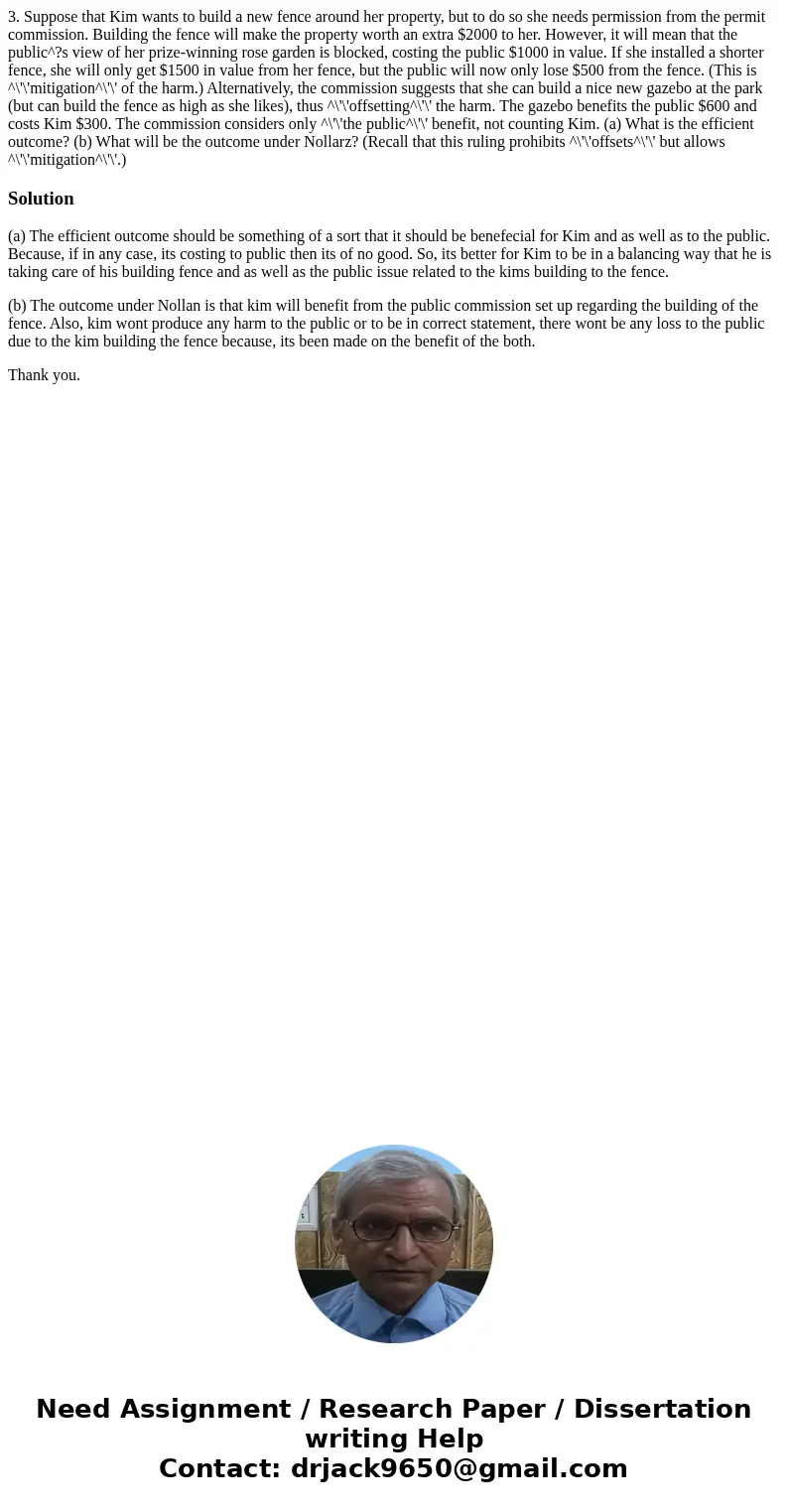3 Suppose that Kim wants to build a new fence around her pro
3. Suppose that Kim wants to build a new fence around her property, but to do so she needs permission from the permit commission. Building the fence will make the property worth an extra $2000 to her. However, it will mean that the public^?s view of her prize-winning rose garden is blocked, costing the public $1000 in value. If she installed a shorter fence, she will only get $1500 in value from her fence, but the public will now only lose $500 from the fence. (This is ^\'\'mitigation^\'\' of the harm.) Alternatively, the commission suggests that she can build a nice new gazebo at the park (but can build the fence as high as she likes), thus ^\'\'offsetting^\'\' the harm. The gazebo benefits the public $600 and costs Kim $300. The commission considers only ^\'\'the public^\'\' benefit, not counting Kim. (a) What is the efficient outcome? (b) What will be the outcome under Nollarz? (Recall that this ruling prohibits ^\'\'offsets^\'\' but allows ^\'\'mitigation^\'\'.) 
Solution
(a) The efficient outcome should be something of a sort that it should be benefecial for Kim and as well as to the public. Because, if in any case, its costing to public then its of no good. So, its better for Kim to be in a balancing way that he is taking care of his building fence and as well as the public issue related to the kims building to the fence.
(b) The outcome under Nollan is that kim will benefit from the public commission set up regarding the building of the fence. Also, kim wont produce any harm to the public or to be in correct statement, there wont be any loss to the public due to the kim building the fence because, its been made on the benefit of the both.
Thank you.

 Homework Sourse
Homework Sourse